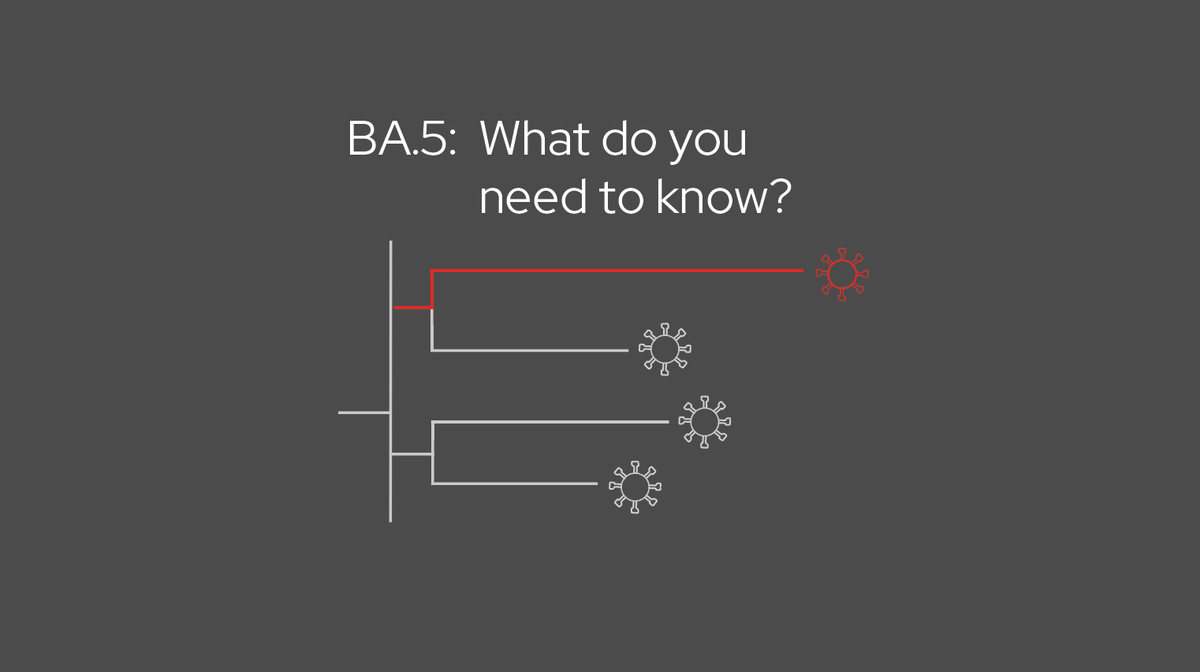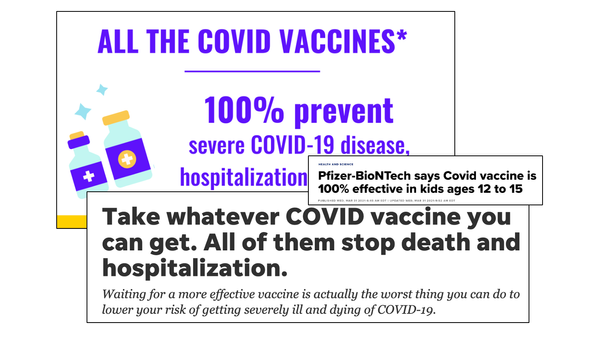BA.5: What do you need to know?

BA.5 is now the dominant COVID variant circulating in the U.S., bringing a wave of reinfections with it. Why are so many people sounding the alarm over BA.5? What makes BA.5 different from previous variants?
First, an explanation of COVID terminology: Omicron is a COVID variant that was first detected in late 2021 and quickly spread around the world. As Omicron spread, it mutated, leading to subvariants. Omicron is now an umbrella term that encompasses multiple subvariants including BA.1, BA.2, BA.4, and BA.5. You can think of Omicron as family, and the subvariants are the individuals that make up the family. Subvariants BA.1 and BA.2 peaked in the U.S. this past winter and spring, respectively. Then BA.4 and BA.5 began to rise, with BA.5 now the dominant subvariant in the US.
The World Health Organization (WHO) has categorized the Omicron family as a variant of concern. According to the WHO, a variant of concern is a COVID variant that causes significant community transmission and has genetic changes that decrease the effectiveness of vaccines and treatments or that increase transmissibility or disease severity.
What’s the difference between BA.5 and other subvariants?
To compare BA.5 to previous variants, let’s go down the list of WHO criteria for variants of concern.
Effectiveness of vaccines and treatments
You’ve likely seen the term “immune evasion” in the COVID-related news when talking about BA.5. Immune evasion means that the virus can partially dodge immune defenses generated from prior infection and/or vaccination. Compared to BA.2, BA.5 is more resistant to vaccine-induced immunity and immunity caused by a combination of vaccinations and breakthrough infection. In addition, antibodies used to treat COVID are less effective at treating BA.5 compared to other Omicron subvariants (references: 1, 2, 3, 4). Altogether, this means that BA.5 has a never-before-seen ability to dodge our defenses against infection. Importantly, this does not mean that we’re back at square one in terms of protection – we’ll talk more about this later.
Transmission
As a member of the Omicron family, BA.5 is more transmissible than other variants like the original SARS-CoV-2 strain and the Delta variant. As of the time of publishing this post, no study has compared the transmissibility of BA.5 to other Omicron subvariants. However, given BA.5’s ability to evade immunity and its position as the dominant subvariant, BA.5 is likely more transmissible than previous Omicron subvariants, at least in part because it can infect people who otherwise would have been protected.
Disease Severity
A recent preprint (not yet peer-reviewed) compared disease severity across different COVID waves in the Western Cape, South Africa. This study found that disease severity during the BA.4/BA.5 wave was similar to the BA.1 wave, both of which were less severe than prior variants. This means that an individual infected with Omicron would have had a lower risk of severe outcomes than an individual infected with Delta. However, this doesn’t mean that Omicron is “mild.” As we saw last winter, Omicron caused more hospitalizations and deaths in the U.S. than Delta, even though Delta (on average) caused more severe disease for any given individual. This occurred because Omicron is so much more contagious, which means it infected far more people than Delta, leading to record-breaking hospitalizations. Disease outcomes from BA.5 are comparable to other Omicron subvariants, and as a result, BA.5 is still sending people to the hospital.
If I’ve already had COVID, does that protect me from BA.5?
Yes and no. If you’ve had COVID and/or a full round of vaccinations, then you will be more protected than someone who has neither caught COVID nor gotten the vaccines. However, because of BA.5’s ability to partially evade immunity, previous infection and/or vaccination does not protect you from BA.5 as well as it protected you from other variants. The emergence of BA.5 disproves a common misconception that having COVID prevents you from catching it again.
Will BA.5 cause multiple repeated infections?
Another concern that has been circulating is that BA.5 could reinfect an individual over and over. While it’s true that some people who were infected with prior variants are now being reinfected with BA.5, this is a different scenario than getting infected with BA.5 twice. In theory, the risk of BA.5 causing multiple infections in the same individual is lower than the risk of being infected by two different variants (for example, BA.1 and then BA.5) because of how your immune system recognizes viruses.
BA.5 has genetic mutations that make it different from previous variants. These mutations act like a disguise, changing how the virus appears and functions. Your immune system, which can recognize the previous variants and ward them off, may struggle to recognize BA.5 with its new mutations. However, once you’ve been infected with BA.5, your immune system will have a head start recognizing BA.5’s disguise during the next encounter, and you should have a lower risk of a second reinfection. However, we don’t know for sure how long that protection lasts, as immunity does wane over time.
What are the health consequences of reinfection? Is it just like catching a cold?
A recent preprint (not yet peer-reviewed) looked at health outcomes in a large group of people who had only a single COVID infection and compared them to a group of people who got COVID two or more times. The study found that people who got COVID multiple times had a higher risk of death, hospitalization, and other health issues compared to those who were infected once. Furthermore, the study found that the more infections a person had, the greater the risk. This suggests that reinfection can negatively impact your health. However, there are several important points to consider to accurately interpret the results of this study. All the subjects were veterans, who may be at higher risk of health issues. In addition, the study looks at death and hospitalization by any cause, not necessarily by COVID. Therefore, the most we can conclude from this study is that people with more infections are at increased risk of death, hospitalization, and health issues – but we can’t say from this study alone how much of that risk is due to infection.
Can the vaccines still protect me against BA.5?
Yes, vaccines can prevent severe illness or death due to BA.5. However, the immunity offered by vaccines is less effective at preventing infection by BA.5 compared to previous variants (references: 1, 2, 3, 4). This does not mean that vaccines are useless or flawed, because they still protect against severe outcomes. This recent preprint study (not yet peer-reviewed) comparing severe COVID outcomes during different waves found that vaccination still lowered the risk of hospitalization or death after a COVID diagnosis during the BA.4/BA.5 wave. To understand how vaccines designed against the original SARS-CoV-2 can still provide partial protection against variants, check out this post.
Given the immune evasion of BA.5, many are wondering whether an Omicron-specific vaccine will be offered soon. The U.S. Department of Health and Human Services recently announced the purchase of BA.4/BA.5-specific boosters for this fall. The new boosters won’t mean the end of the pandemic because the virus is still capable of mutating, but we anticipate they will be better than the current vaccines at recognizing BA.4 and BA.5 and offer more protection during the current wave.
To summarize, BA.5, the current dominant COVID subvariant, is better than previous variants at dodging the protections offered by vaccines, antibody treatments, and previous infection. This means an increased risk of reinfection, which could negatively impact your health. Data on BA.5 severity is limited, but so far it looks like the severity of BA.5 infections is similar to other Omicron subvariants. Fortunately, we know that vaccination still lowers the risk of severe hospitalization or death due to COVID, even for Omicron.
Sarah Donofrio is a contributing writer for You Can Know Things. She is pursuing a Ph.D. in Neuroscience studying the role of neurodegeneration in movement disorders, and is particularly interested in how the cerebellum contributes to motor dysfunction in disease and normal aging.




